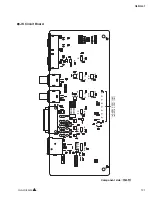
www.warriorwinch.co.uk
www.warriorwinch.co.uk
• Number of command: 2
• Frequency bands: ISM 868/915 MHz
• Power supply: N°2 “AAA” 1,5 batteries
• Absorption at rest: ~ 1 μA
• Average absorption in transmission: 14 mA
• Maximum range in an open fi eld: 100 ÷ 150 m in open fi eld and free interference environment.
• 2 LED indicator lights
• Silicon rubber keypad (grade of enclosure IP67)
• Operating temperature: -20°C to +70°C
• Dimension (in mm): 109 x 56 x 30
• Weight (with batteries): 120 g
TECHNICAL FEATURES
INSTRUCTIONS FOR USE
LED INDICATOR ON THE TRANSMITTER
SYSTEM CODING
WARNING ALARM
REPLACING THE BATTERIES IN THE TRANSMITTER
For correct use and in order to avoid damage to people or things, it is obligatory to follow these
instructions:
1.
Power up the receiver and wait a few seconds (the receiver takes a couple of seconds to be
able to operate as it carries out a self-diagnosis).
2.
Press START to allow the system to receive the transmission (the system will stay active for 2
minutes after the last control has been given, after which it resets. Then press START again to
restart the system).
3.
Press the required key on the transmitter to activate the related output on the receiver.
4.
Press the STOP key to inhibit the controls reception. In this phase all the controls are reset. To
activate the system again press START.
If the red LED on the handset fl ashes when the key is held down, it means that the batteries are almost
fl at (<2,5 V). In this situation, replace the batteries as soon as possible since the system performance
may be impaired. When the voltage reaches values lower than 2,2 V, the red LED stays on when the
key is pressed. In this situation, replace the batteries, as it is not possible to give commands to the
output ports.
To replace the batteries follow these instructions:
1.
Obtain 2 “AAA” 1,5V alkaline batteries.
2.
Open the battery compartment by unscrewing the two screws (fi gure 1).
3.
Remove the fl at batteries from their holder (fi gure 2).
4.
Insert the new batteries paying attention to the polarity shown on the end. Before going ahead
with closing the battery compartment, made sure the green LED emits a fl ash each time a key is
pressed.
5.
After checking that the transmitter is working properly, close the container and screw back on
the two screws indicated at point 2.
Figure 1
Figure 2
REGULAR FUNCTIONING (GREEN LED)
During standard operation of the transmitter, the GREEN led fl ashes when any key is pressed. Holding
down any key will result in the GREEN led fl ashing every 3 seconds.
LOW BATTERY (RED LED)
When the battery is low (2,5V), the RED led will fl ash whilst any key is pressed. At this point, we suggest
you replace the battery. If the voltage reaches 2,2V, the RED led will stay on whilst any key is pressed.
NB: DO NOT LEAVE FLAT BATTERIES INSIDE THE TRANSMITTER.
The warning alarms only show
when a key is pressed. If no keys
are pressed, the LEDs stay off .
Coding system is an operation that is only necessary when the receiver has to be replaced or you want
to use it with a diff erent radio remote control from the one it is coupled with at the time of purchase.
TO RECODE THE SYSTEM REFER TO THE RECEIVER USER MANUAL.
THE REMOTE CONTROL CONTAINS MINIATURIZED ELECTRONIC CIRCUITRY, AND SO WE RECOMMEND
TAKING GREAT CARE WHEN FOLLOWING THE INSTRUCTIONS FOR REPLACING THE BATTERIES, HANDLING
THINGS DELICATELY IN A CLEAN AREA.
IT IS NOT ADVISABLE TO USE CARBON-ZINC BATTERIES AS THEY CAN UNDERGO SELF-DISCHARGE MORE
RAPIDLY THAN ALKALINE ONES.
DO NOT USE RECHARGEABLE BATTERIES.
IN
OUT
LED
Appearance
Meaning
GREEN LED
Flash
Key pressed
Flash every 3 sec.
Key always pressed
Flash every 1 sec.
Absence of link radio
Flash twice every 1 sec.
Loss of link radio
RED LED
Flash every 1 sec.
Flat batteries (<2,5V)
On
Flat batteries (<2,2V)























